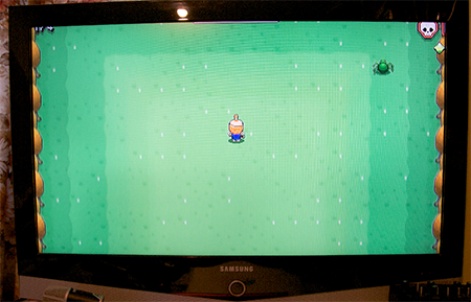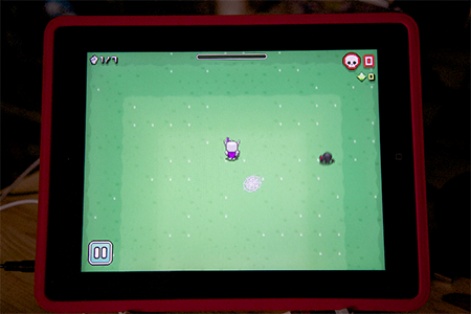Most recently he went full time indie to work on his first multi-platform title Cyberstream Fugitive.
I finally took the plunge last week and bought an Ouya.
Why did I do it? Well as a Unity-based developer, porting across to Ouya is fairly simple and doesn't cost me anything apart from a short amount of time and of course the cost of a console so why not?
If the game doesn't sell many copies then I know not to bother again in the future but if it does then, well, I've made more sales! It's a fairly low risk venture.
Early impressions
I've yet to actually port over to the console, so my experiences to date are essentially the same as any consumer. Nevertheless, as the title suggests, I'm far from happy with Ouya.
Bizarrely, I don't have any issues with the console itself. Okay, maybe I still find its shape a little ugly and the controller isn't the best, but it only cost me £99 what exactly would I be expecting for such a small amount of money?
As a result, I've let those kind of aesthetic displeasures drip away. For me, the feeling of being let down stems from the vast number of mobile games that have been ported to it, and the apparent lack of care developers have taken bringing them across.
Since I'm also going to porting games to Ouya, I wanted to get hold of a game I was already familiar with on another platform, and I spotted NimbleBit had brought NimbleQuest across. So, I downloaded it.
Lack of vision
On first impressions, something wasn't quite right about NimbleQuest on Ouya. It was all a bit od, a bit off, and I couldn't quite put my finger on why.
Then it hit me I couldn't actually see all the playing area. More specifically, I couldn't see the HUD as it was obscured by the border of the Samsung TV I was playing it on.
Here's what it NimbleQuest looks like playing to me on my television:
And here it is running on my iPad where you can see all of the HUD:

What we are seeing here is an example of overscan. Part of the image being supplied to the TV is not being drawn, and it's the parts of the image closest to the edges of the screen that suffer.

Down on downloads
There are ways you can use the design of a game to make sure all HUD elopements only appear in what's known as a 'title-safe' area, of course.
On the more mainstream consoles there are technical requirements that all HUD elements be no more than 25 percent distance to the edge of the screen.
Fail to keep to that rule and the game fails testing and you have to correct it and re-test - this clearly isn't happening here.
You might argue that most people will have a TV that can compensate for it. Mine may have such a feature - I don't know and I haven't checked. To be honest, I shouldn't have to.
The thing about the console experience is just that it should be an experience; it should be plug-and-play. I should be able to just turn it on and play some games. This is the experience that the previous console generations have taught us, and it was an experience I was expecting here.
This is an important point: Over the years, Microsoft, Sony and Nintendo have changed what consumer perceive a console to be. It's no longer just about games it's about delivering a service.
With Ouya, the end result of all this is I've been left with an unplayable game or, rather, one that's especially difficult to play. This, in turn, raises an interesting question: How much of an impact would an issue like this have on conversion rates from downloads to sales on Ouya?
It's an important question, if only because scores of developers are reporting poor sales, despite enjoying healthy download rates.
Rules are made for breaking
The odd thing about my first experience is that, if you go to the Ouya developer site you will find a page full of technical guidelines, and the first item on it is how to cope with overscan.
Indeed, Ouya even claims some games may not be approved for sale if they fail to meet these guidelines, which leads me deduce that those working at the firm are not really checking.
I suspect what's happening is, Ouya is so desperate for content in the platform's difficult, unproven early days it's letting games that don't meet Ouya's strict technical guidelines slip through to build up its library.
At the moment, sticking rigidly to Ouya's rule-set would mean developers putting more effort in porting games to the platform something that, without any guarantee of financial return, could result in many developers, such as myself, skipping it.
None of this is very good for Ouya. If the console is known for bad ports, then it will find it very hard to gain traction with consumers and developers alike.
As a developer, there are some things we can do to help out, such as making sure that your game's HUD is visible on all screens. It isn't hard and it isn't that expensive.
When it comes to getting my game onto the Ouya, I for one won't just be clicking 'export'.






















